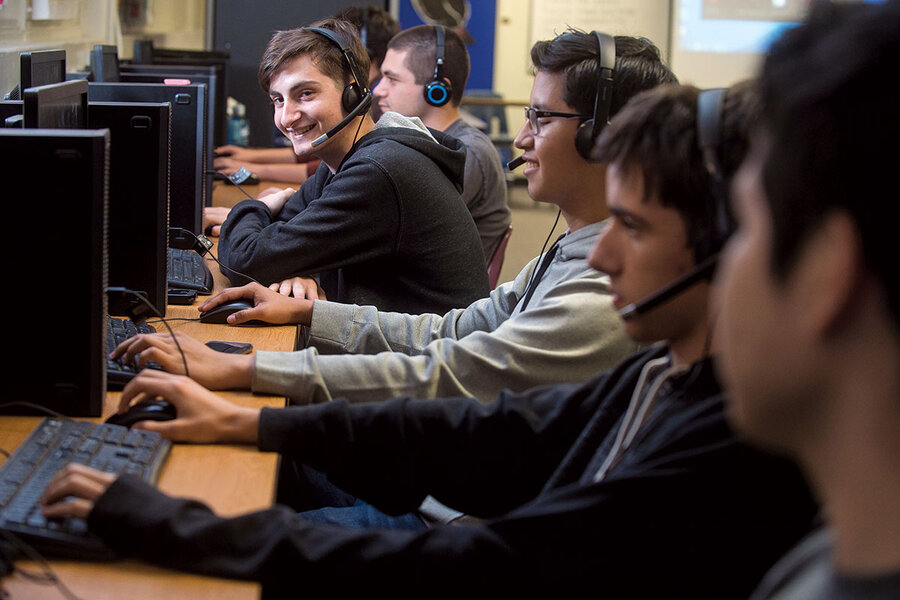Warriors in a mental realm
If you think it’s odd that thousands of people gather to watch other people play video games – and that video games, as a spectator sport, are a $660 million industry – then perhaps I’m not alone.
This week’s cover story by staff writer Jessica Mendoza charts the rise of esports. She witnessed the Los Angeles Valiant triumph over the Seoul Dynasty in a game of Overwatch cheered on by a packed house in a 530-seat amphitheater. Overwatch, Wikipedia informs me, is a video game in which multiple players connected online “work together to secure and defend control points on a map or escort a payload across the map in a limited amount of time.” So ... kind of like football, except the payload is often a bomb instead of an oblong ball, the video game characters are heavily weaponized, and there is the defensive Doomfist instead of blitzing linebackers.
The hope is this will someday become a professional sport on the order of pro football. Considering that the National Football League generates $13 billion in revenue, the Overwatch League has a ways to go. But regardless, it is a clear sign of something else: change.
As a former Sunday school teacher of ninth-graders, I can testify to the fact that wherever two or three teenage boys are gathered together, video games will become the subject of bizarrely intense conversation. I once tried to start a discussion about the New England Patriots with a student wearing a New England Patriots sweatshirt. He looked at me like I was from Neptune. Yet any mention of video games had to be quashed, lest it become an hour-long colloquy on the supernal wonders of A-A-B-A-X-Y-Y-Ying a mutant foe into oblivion.
The danger of dismissing this fascination with video games is not just being thought of as uncool. It is missing where young people are living their lives.
A study released last year gave a taste of how dramatically the lives of teenagers are changing. It suggested that, from driving to drinking, teenagers today are moving away from behaviors that used to define teenagerhood. The percentage of high-
schoolers who had been on a date declined from 86 percent in the late 1970s to 63 percent this decade. Just to repeat: More than one-third of American high-schoolers today have never been on a date.
The study attributes these changes primarily to the delaying of adulthood. Amid comparative affluence, children today have fewer responsibilities. Why become an adult before you have to?
But there’s something else, too. From virtual reality to social media, the lives of today take place, more than ever, in a mental landscape. Teenagers a few generations ago opened a car hood to tinker. Today, many pop open the internet as hackers. A few generations ago, watching a mental sport like chess was seen as the province only of the ultra-refined. Today, thanks to esports, the mental landscape of sports comes with all the crashes and bangs of Super Bowl Sunday. Not to mention a Doomfist.







